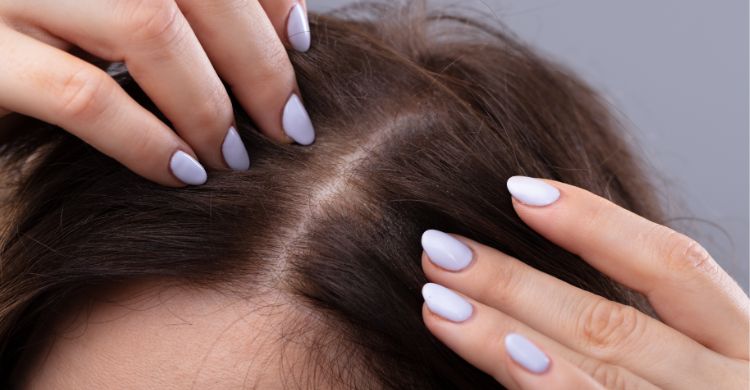How non surigcal rhinoplasty can make you feel great with a smoother nose

What is Non Surgical Rhinoplasty?
Non-surgical Rhinoplasty is an aesthetic medical procedure of augmentation to alter and reshape a person's nose without carrying surgery. The process involves filling of depressed areas of the nose by lifting the angle of the tip, smoothing out the appearance of bumps, and making it less angular.
The process involves the use of dermal fillers most commonly hyaluronic acid to beautify the nose and an overall face symmetry, but not helps in size reduction of the nose. The process is also known as liquid Rhinoplasty, liquid nose job, 15 minutes nose job, and non-surgical nose job.
The procedure of Non-surgical Rhinoplasty:
Non-surgical Rhinoplasty involves the use of hyaluronic acid fillers to be injected beneath the skin of the nose to modify its tip to make it crispier, refined, and to provide temporary facial rejuvenation and harmony. Filler ingredients settle into deeper layers from the site where it is injected. Hyaluronic acid filler holds its shape and can change the look of your nose at any desired location, from six months to three years.
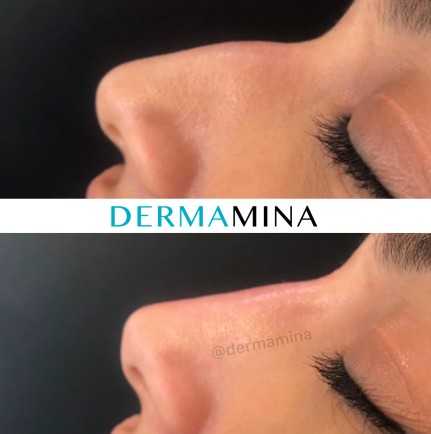
Technique Used for Non-surgical Rhinoplasty:
Non-surgical nose job is a more straightforward cosmetic procedure which gives desired outcomes without getting under the knife, and just a needle can create wonders. The process starts by applying local anaesthesia to the nose and surrounding areas to minimize the effect of pain and pressure produced by the injection needle. Usually, lidocaine is used for temporary numbness of the site of the nose and surrounding areas. After the local anaesthesia agent takes its effect a sterile syringe prepacked with filler and a hypodermic needle, i.e. 27-G, 25mm is used to inject material under nasal skin deep inside subcutaneous tissues present above the periosteum. Dermal filler (hyaluronic acid) is injected into the desired area of the nose, maybe nose bridge or tip. The patient may feel the slight pinching sensation while the procedure is carried out.
How long is the Treatment Procedure?
The whole treatment procedure of non-surgical Rhinoplasty takes about fifteen to forty minutes, depending upon the area to be treated and desired outcomes.
Role of Hyaluronic Acid Fillers:
Hyaluronic acid fillers are temporary dermal fillers which are used to treat wrinkles, fine lines, and facial folds and to give structure to temples, chin, jaws, and nose. Hyaluronic acid is naturally found in our body, especially in skin, eyes, and joints. It is responsible for retaining water and for keeping your skin moist and hydrated. Different varieties of hyaluronic acid are present.
Each of the hyaluronic acid fillers has unique characteristics, and they produce the best results based on the location and the area they are injected.
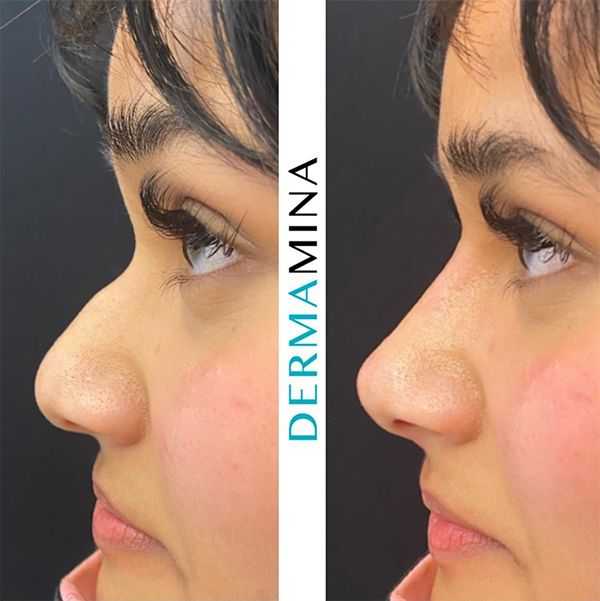
Targeted Areas of Nose for Non-surgical Rhinoplasty:
Dermal fillers used to modify the shape of the nose can be injected at any part of the nose, but usually targeted sites are the bridge, tip, and sides of the nose. Non-surgical nose job successfully smooths out small bumps in the nose, and it can also make the tip of nose more prominent by giving it volume and lifting it at a suitable angle. The broader nose cannot get smaller; also, large nose bumps cannot be smooth out by non-surgical Rhinoplasty. One has to undergo cosmetic surgery to achieve such goals. Following are the details of targeted areas corrected by non-surgical Rhinoplasty;
- Low Bridge: Non-surgical Rhinoplasty can correct a short bridge nose. Building a nose bridge is a common request by various people belongs to Asia or African American descent who usually have lower nose bridges. Hyaluronic acid dermal fillers are used to raise the depressed bridge.
- Dip Correction in Nose: Goal of liquid Rhinoplasty is to correct, and to add structure to the nose. Dermal fillers of hyaluronic acid can do best by adding volume to the dip or divot in the nose bridge.
- Nose Bumps: Aesthetic contour and cosmetic profile of nose can be enhanced by adding dermal fillers to the areas around the nose bumps. Non-surgical Rhinoplasty does not target the removal of nose bumps. Filling of nose bumps with hyaluronic acid can smooth out the bumps and gives the appearance of the smooth and straight nose with a more juvenile facial appearance by improving face-nose symmetry.
- Irregularities: various other abnormalities in shape and structure of the nose can be improved by undergoing non-surgical Rhinoplasty.
- Revisions: If the patient has undergone non-surgical Rhinoplasty in history and is not satisfied with the outcomes, then non-surgical Rhinoplasty is an ideal substitute to make corrections of previously done liquid nose job.
Areas those cannot be done with Non-surgical Rhinoplasty:
Non-surgical Rhinoplasty is an excellent alternative to surgery in many cases, but some areas of nose cannot get desired outcomes without getting under the knife. Here are few sites of the nose which cannot be treated by non-surgical Rhinoplasty.
- Removal of bumps: Removal of nodes cannot be addressed by non-surgical Rhinoplasty because treatment of nose by liquid fillers is all about adding volume and to the depressed areas and to build the site around bumps and hump. This process gives the nose a more defined and straight appearance. If the patient wants a smaller size nose or to remove large bumps, then surgery is an ideal option.
- Bulbous nose tip: Dermal fillers of hyaluronic acid cannot be successful in achieving correctness or in minimizing bulbous nose tip. Removal of bulbous tip involves the rearrangement of the tip by removing cartilage by the aesthetic surgeon by the surgical Rhinoplasty.
- Wide nostrils: Wide nostrils cannot be targeted by non-surgical Rhinoplasty because a narrow nose shape can only be achieved by removing from the nose, which cannot be attained by adding fillers.
- Traditional Rhinoplasty can only correct plunging nose tip: Drooping or dipping nose tip.
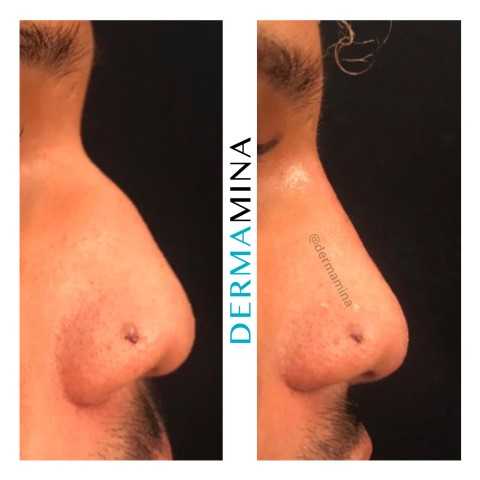
Who is a Good Candidate for Non-surgical Rhinoplasty?
Patients who want to raise their nose bridge by adding volume, filling in nose dip, and want to flatten the appearance of small to moderate size bumps are ideal candidates for non-surgical Rhinoplasty.
Patients who are not willing to undergo surgery by traditional means can quickly correct symmetry of their nasal features by a liquid nose job.
Candidates for non-surgical Rhinoplasty must be in good health, and they must have a realistic approach for the procedure.
Patients with bleeding and clotting disorders are not ideal candidates for non-surgical Rhinoplasty.
Desired cosmetic outcomes can be achieved with a prior detailed discussion with the aesthetic practitioner who will assess the candidate’s requirements and will elaborate achievement of best possible nose contour illusions.
What to Expect Before Treatment:
Non-surgical Rhinoplasty can be referred to as the lunch break procedure.
It takes fifteen to forty minutes to get completed. The patient must have a realistic approach for nose reshaping.
Fillers of hyaluronic acid may last for about six months to three years, so maintenance touch-ups will be required from time to time as the process of liquid nose job is not permanent in its outcomes. A slight pinching pressure may be observed after the filler injection is applied.
The patient would be able to carry everyday activities after the procedure. Some patients might have mild bruising for a few days after the dermal filler is injected.
What to Expect After Treatment:
After non-surgical Rhinoplasty a mild pain, redness, bruising and swelling can be observed at the site of administration of filler injection.
Within an hour or two, the fillers of hyaluronic acid will start to get settle.
A patient will be able to see the desired outcomes as soon as redness gets subsided.
Use of ice packs to the application area can be helpful to minimize inflammation, redness, and swelling.
The patient will be able to see the desired results after a week or two.
Filler of hyaluronic acid will start dissolving within a maximum of six months while some of the types of HA may last for about three years. Candidates must realize that results are not permanent.
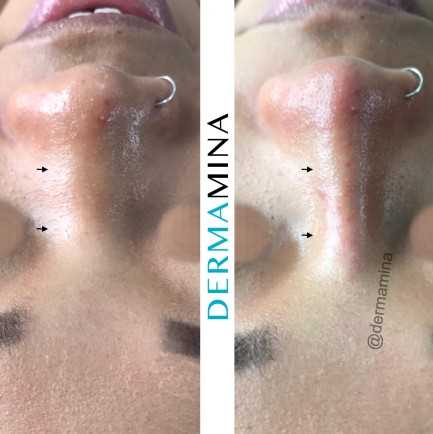
Dos and Don’ts before the Procedure:
Here is a list of broad guidelines associated with non-surgical Rhinoplasty.
Blood-thinning agents like aspirin, anti-inflammatory medications such as ibuprofen, Vitamin E supplements should be avoided one week before non-surgical Rhinoplasty.br />
Increased level of Vitamin K helps in reducing the risk of bruising at the site of administration of filler injection. Taking green leafy vegetable help in boosting vitamin K levels
Drinking plenty of water, eating starch and proteins is advised before getting into procedure. Eating a lot of food is not recommended as it may cause nausea during or after the nose job session.
Post Procedure Precautions:
In addition to general post rhinoplasty protocols, the following are the recommendations to carry out after undergoing the procedure.
Keep the area clean.
No makeup for twenty-four hours of administration of filler injections is recommended.
Avoid exercises forty-eight hours after the procedure.
Avoid wearing heavy sunglasses.
Avoid going into the sun.
Risks and Side Effects of Non-Surgical Rhinoplasty:
Although non-surgical Rhinoplasty is considered as the safe and effective procedure of nose reshaping, few common as well as certain complicated risks, are associated with the process.
Common Side Effects:
Common side effects of non--surgical Rhinoplasty may include.
Redness
Itching
Mild pinching or pressure sensation
Tenderness of nose
Infection at the site of injection (rare)
Swelling
Bruising
Nausea
Hypersensitivity
SaveFace
You safety matters
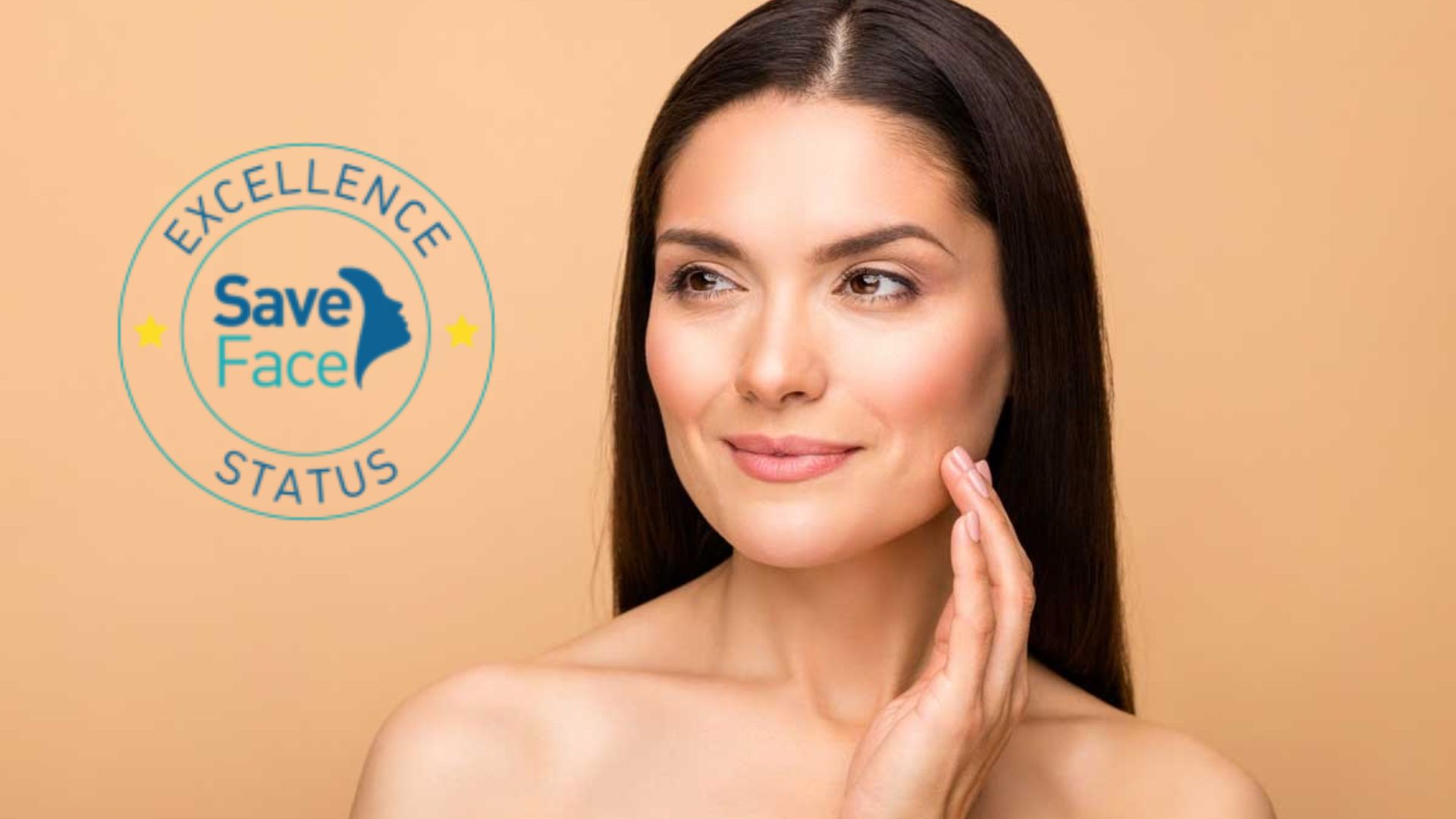
At Dermamina we have successfully attained the Save Face Accreditation, which signifies our consistent adherence to the highest industry standards. To earn this esteemed recognition, we underwent a rigorous evaluation conducted by an independent body.
Read more
Save Face is a register accredited by the Professional Standards Authority, holding official recognition from the Government, the Department of Health, and NHS England. This acknowledgment underscores our unwavering commitment to delivering exceptional quality services, meeting the stringent criteria set by these esteemed organizations.






